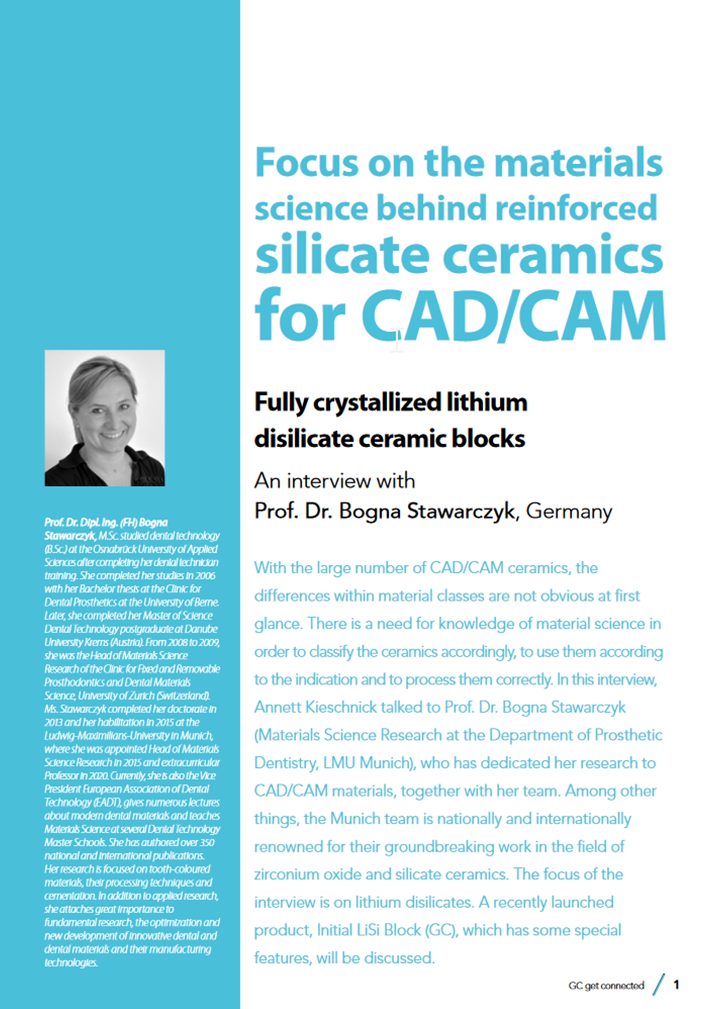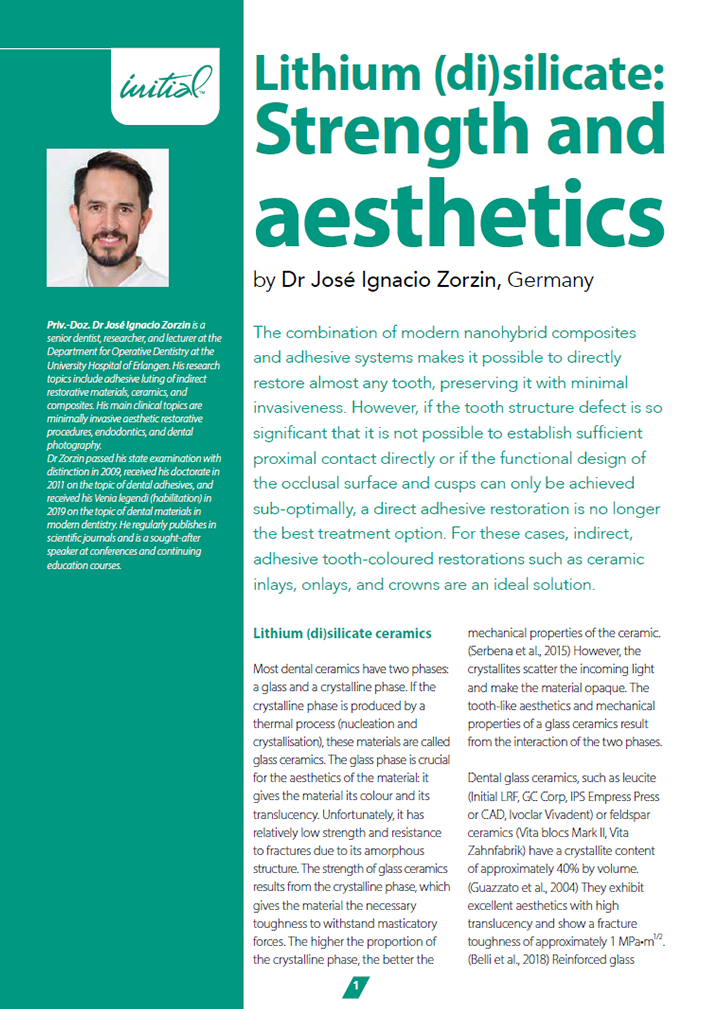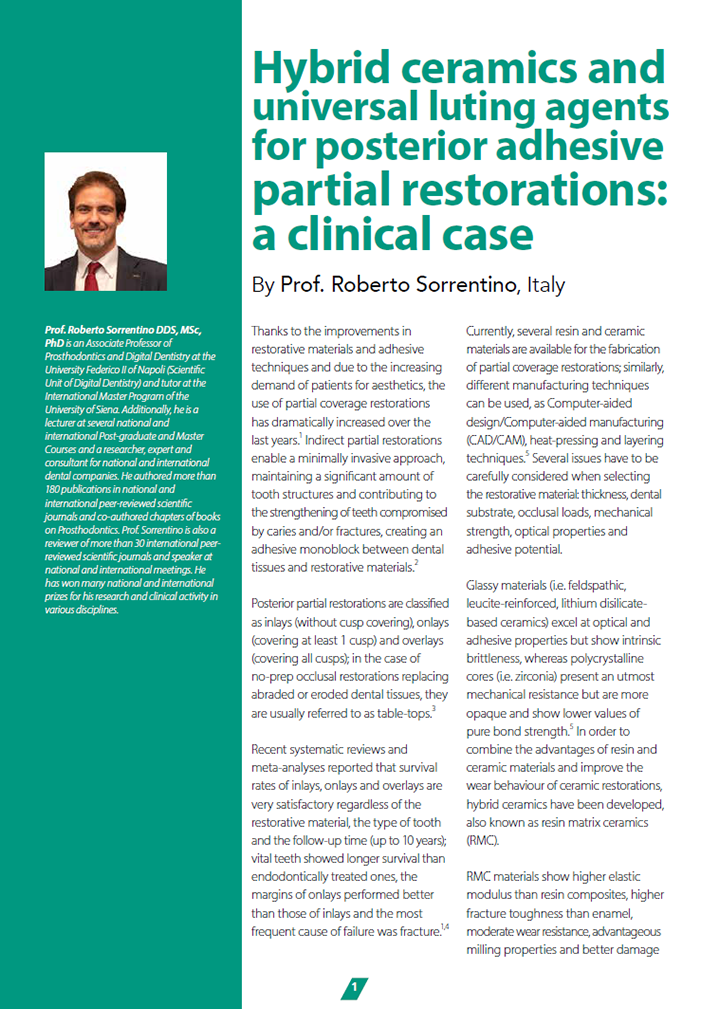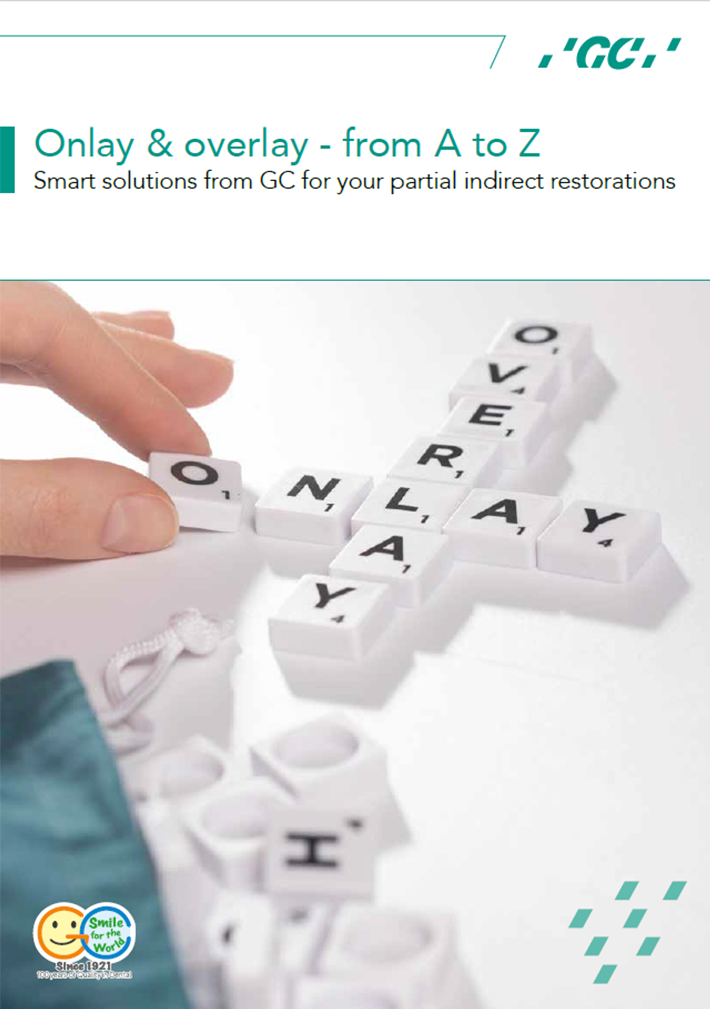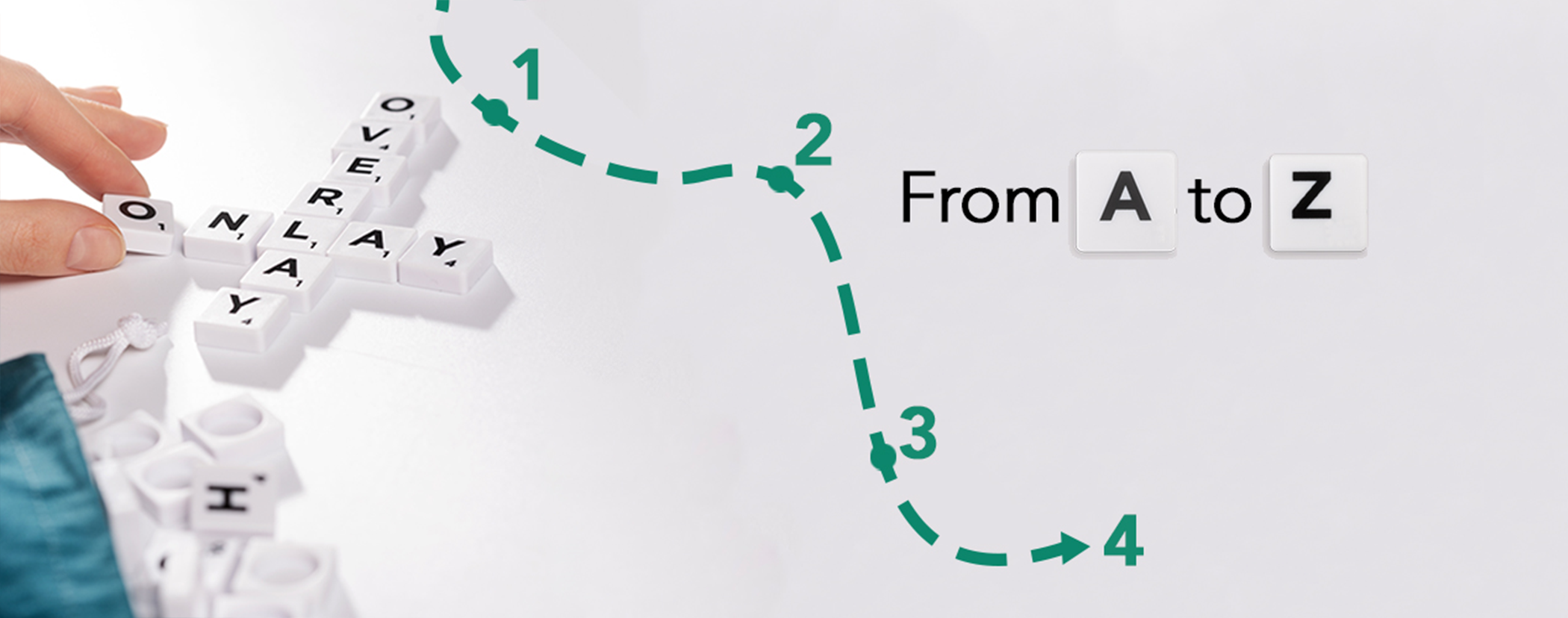
Let GC guide you for the restoration of indirect partial restoration with our smart solutions and tips & tricks!
2. Material selection
for your indirect posterior partial restoration can be a real challenge. Many factors, such as quality of remaining tooth structure, material of antagonists, age of the patient and presence of bruxism, must be taken into consideration.
GC offers two innovative materials that cover all demands of onlay and overlay restorations:
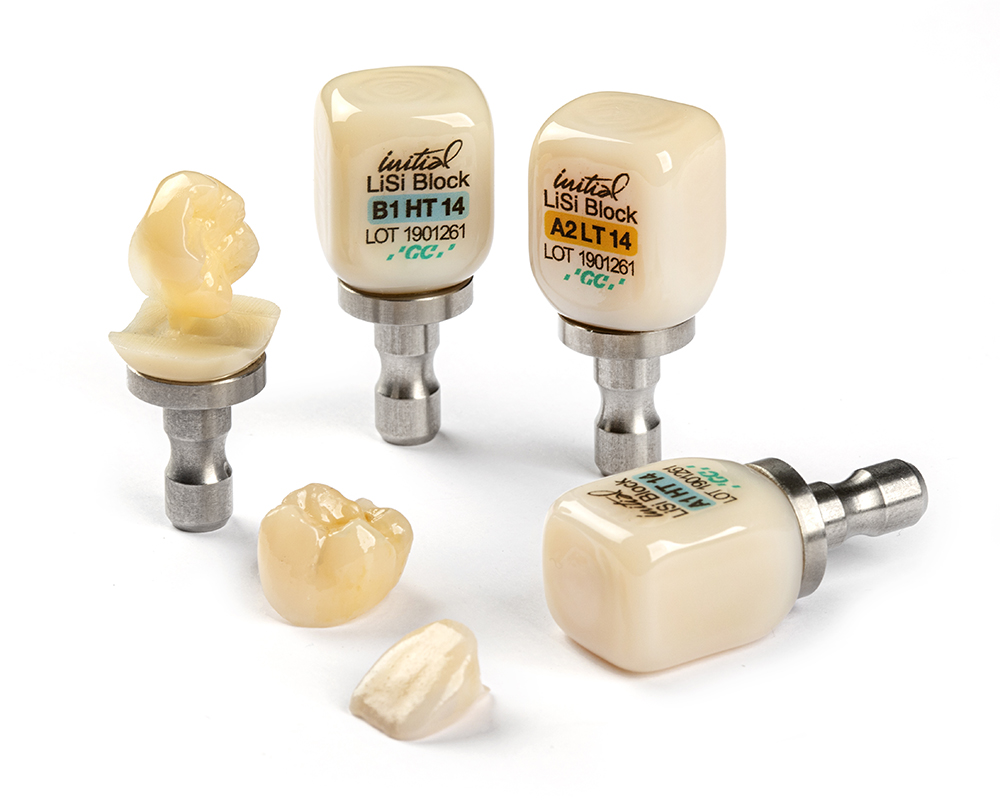
Initial LiSi Block is a fully crystallized lithium disilicate block that delivers optimal physical properties without firing.
Key advantages
- Fully crystallized lithium disilicate, which saves time, as no firing is required.
- Durable aesthetics & accurate margins for a seamless fit
- Natural opalescence for genuine beauty
- Provides long-lasting restorations in the posterior area, thanks to high physical properties & HDM technology
- Easy and fast polishing for a very high gloss that lasts over time
- Possibility to paint with the nano-filled coating Lustre Pastes ONE
CERASMART270 is a very strong hybrid ceramic CAD/CAM block that combines flexibility and precision to provide a long-lasting aesthetic restoration with a natural fit.
Key advantages
- High breaking energy to buffer masticatory pressure
- Extremely suitable for patients with generalized wear or hyperfunctions because of its impressive wear resistance
- Immaculate blending ability for effortless aesthetic results
- Easy and fast polishing for a very high gloss that lasts over time
- Possibility to paint with OPTIGLAZE color


Tips & tricks for correct material selection

Use Initial LiSi Block for:
- Restoring teeth with compromised structure (cracks, big defects, several cusps missing)
- Ceramic antagonists
- Adult patients

Use CERASMART270 for:
- Restoring teeth with non-compromised structure (smaller defects)
- Patients with bruxism
- Younger patients
Clinical cases
Case of overlay on tooth 36 restored with Initial LiSi Block
Courtesy Dr. Pierre Dimitrov (Bulgaria)
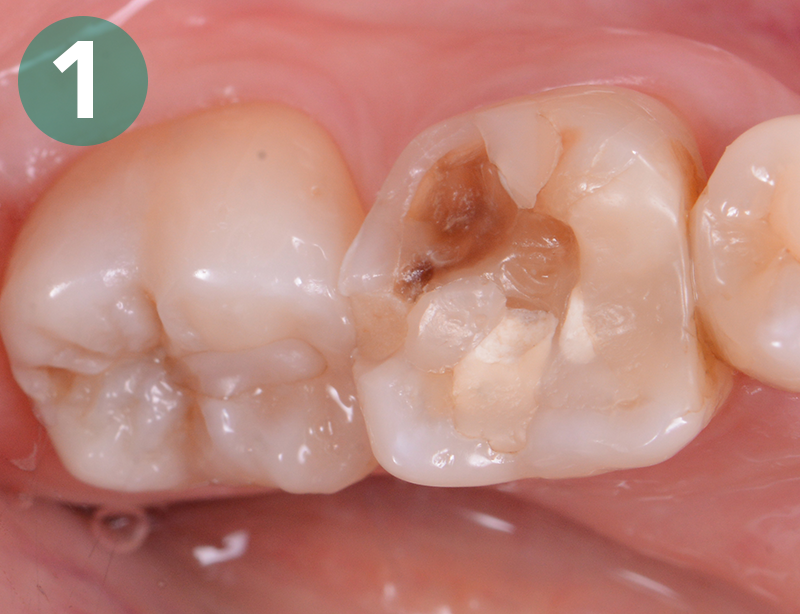
Initial situation

Preparation

Luting
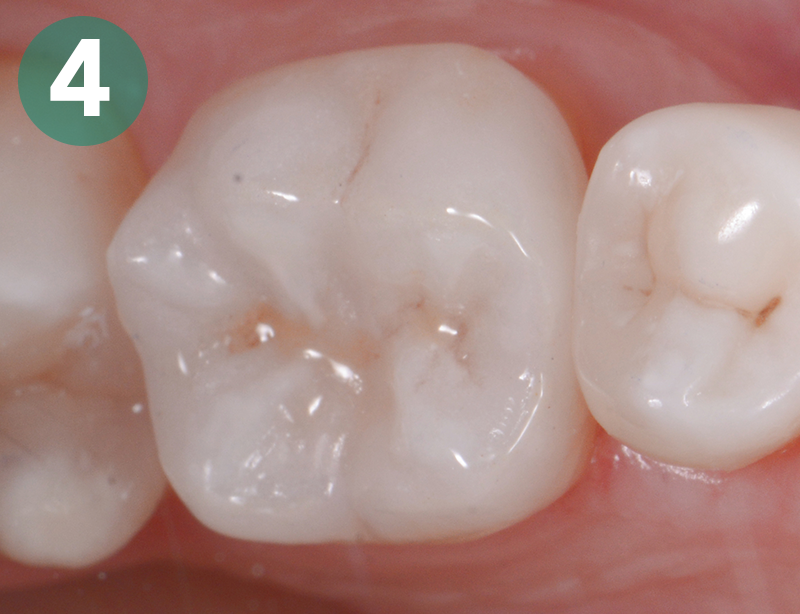
Final result
Downloads
FAQ

Which material is better – Initial LiSi Block or CERASMART270?
Both Initial LiSi Block and Cerasmart270 are high-quality materials, but the choice between them depends on the specific needs of the case and the preference of the dentist.
We have some recommendations on when to use each of the material in scope of onlay and overlay restorations.
Initial LiSi Block is a lithium disilicate glass-ceramic material that offers high strength, durability, and excellent esthetics. When restoring teeth with onlay or overlay restorations, Initial LiSi Block will prove excellent in cases of teeth with compromised structure (cracks, big defects, several missing cusps), in cases where the antagonists are already restored with ceramic material and in adult patients.
On the other hand, CERASMART270 is a resin nanoceramic material that combines the strength of ceramics with the elasticity of composite resins. It is ideal for onlay and overlay restorations in teeth with moderate sized defects, in patients with bruxism and younger patients.
Evaluate the properties and advantages of each material before making a final decision.
Which material is faster to mill– Initial LiSi Block or CERASMART270?
Both materials’ milling time is comparable to other materials on the market. CERASMART270, being a resin-based material, has an exceptionally short milling time – 8 minutes on average, depending on the size of the restoration. Initial LiSi block is a harder material, and therefore has a longer milling time – 16 to 18 minutes on average, depending on the size of the restoration.
In case you choose chair-side milling using any of the two blocks, a full restoration can be ready in a very short time.
Related products

Initial LiSi Block
Lithium disilicate CAD/CAM block for chairside solutions
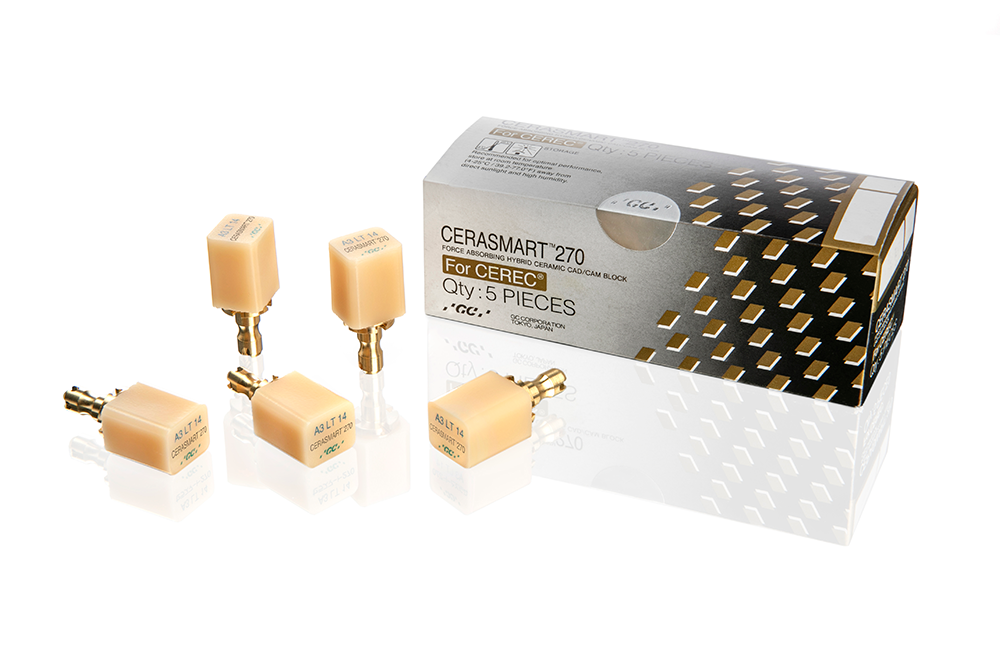
CERASMART270
Force absorbing hybrid ceramic CAD/CAM Block


